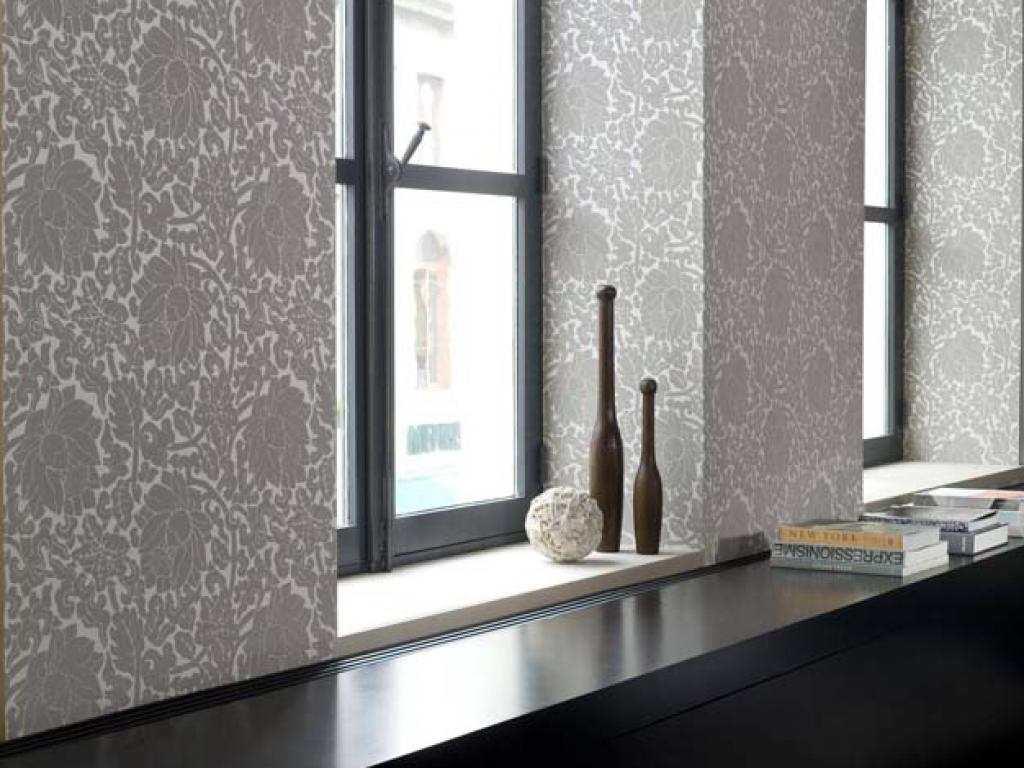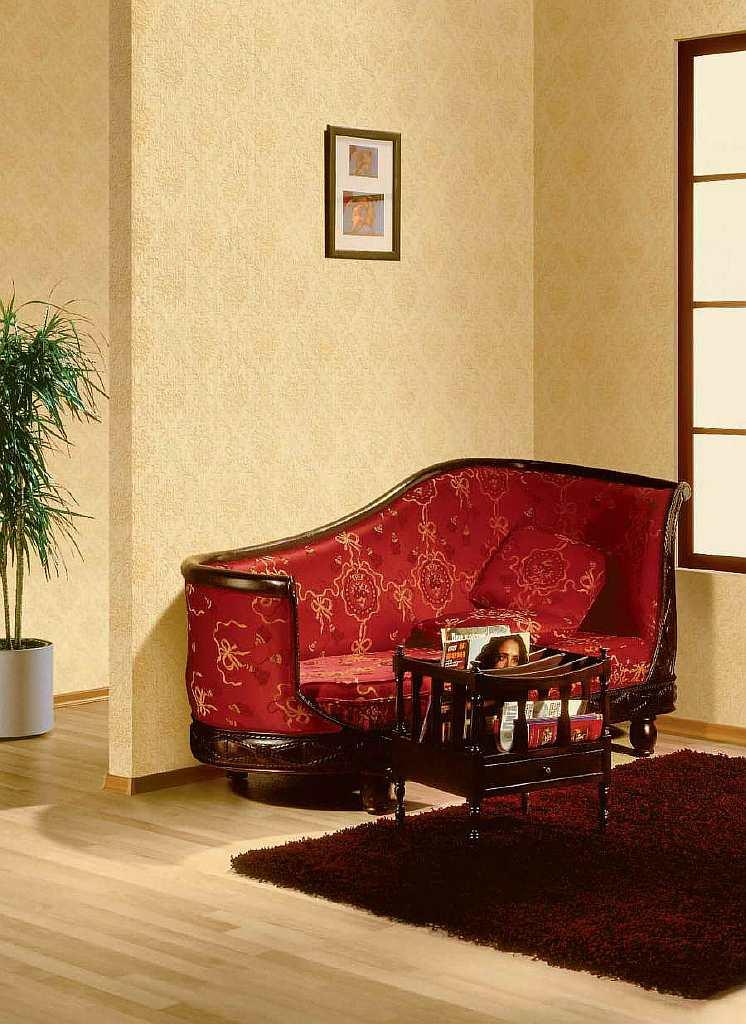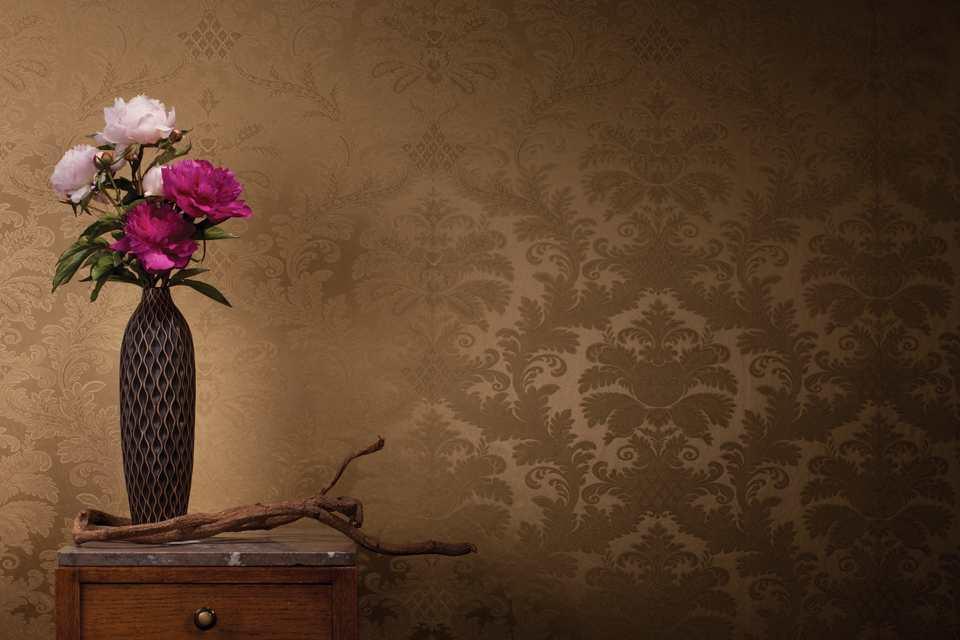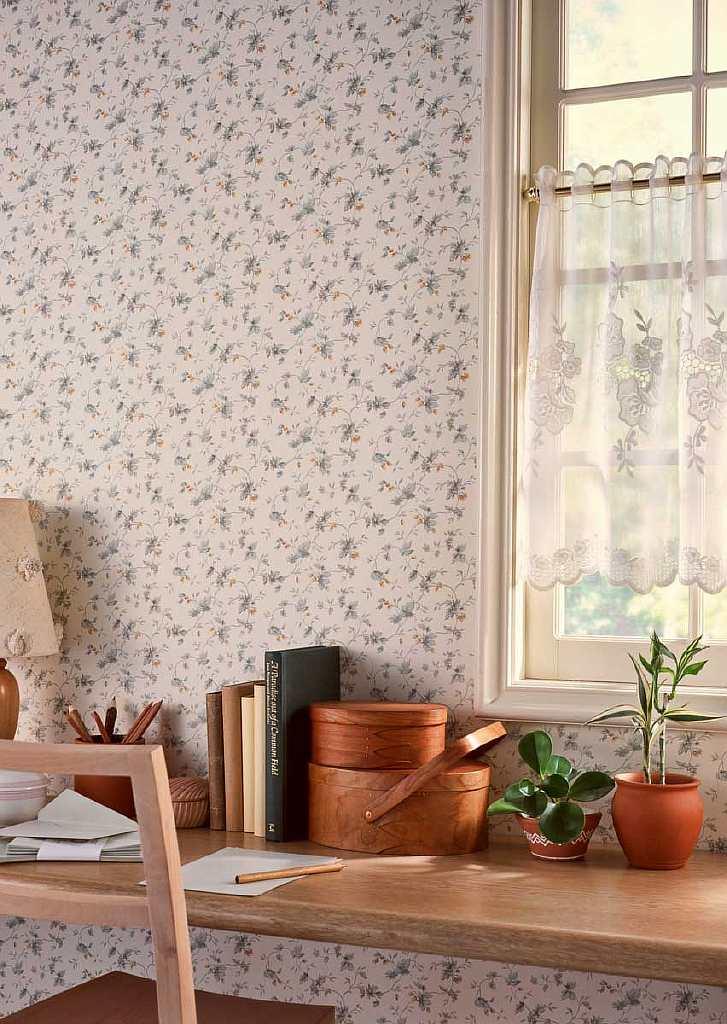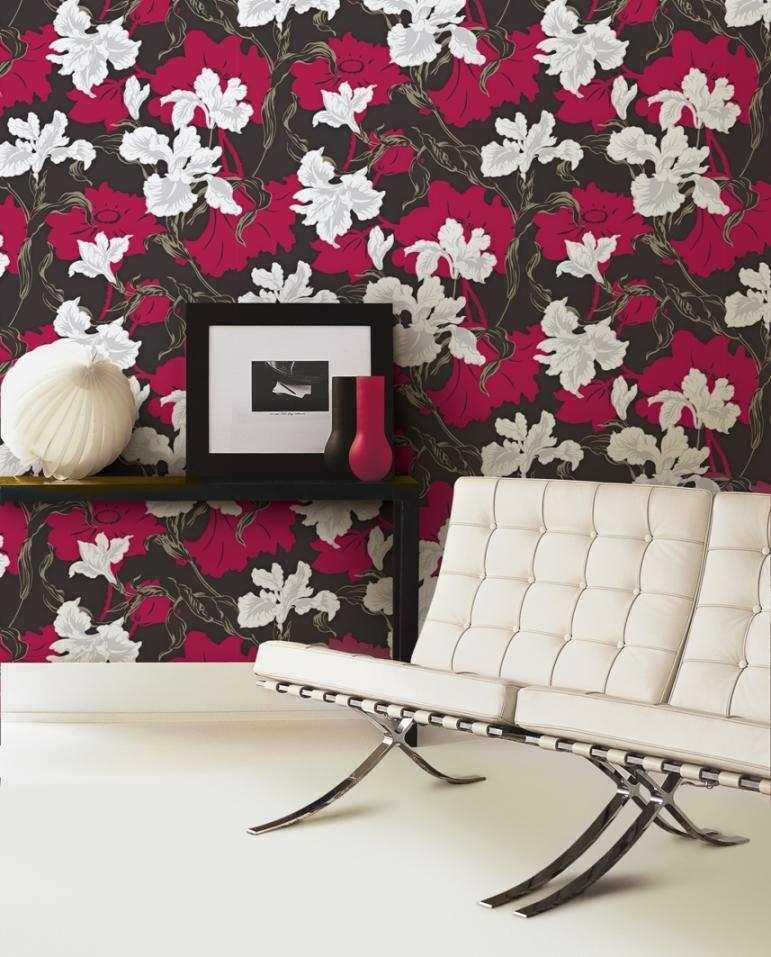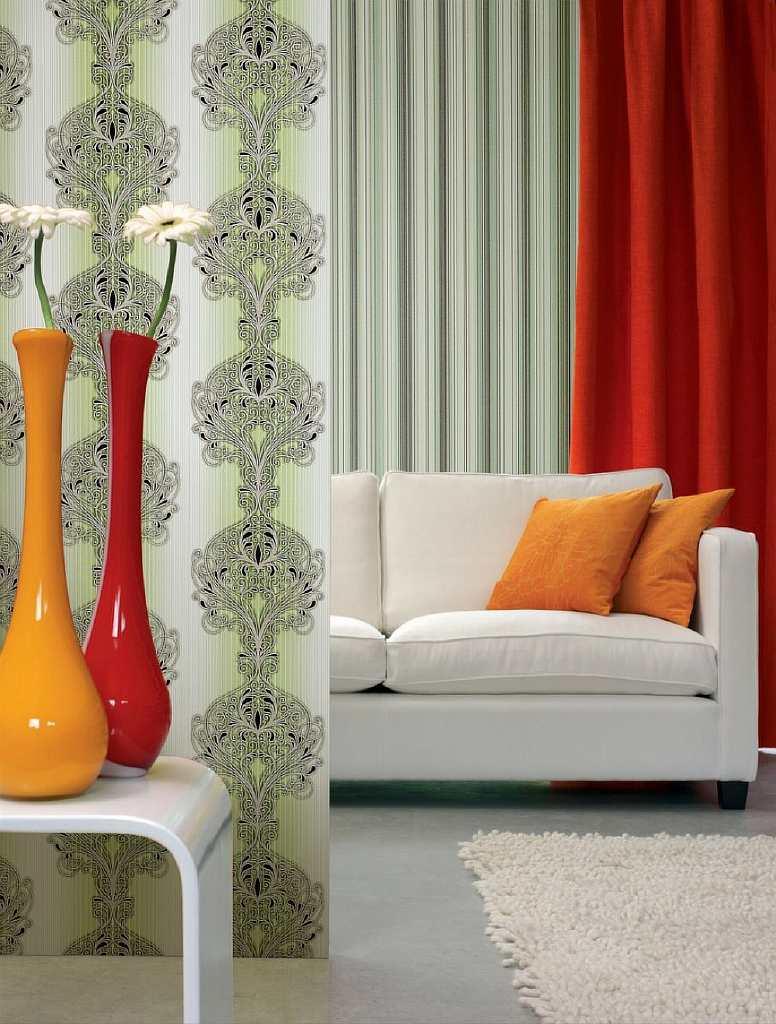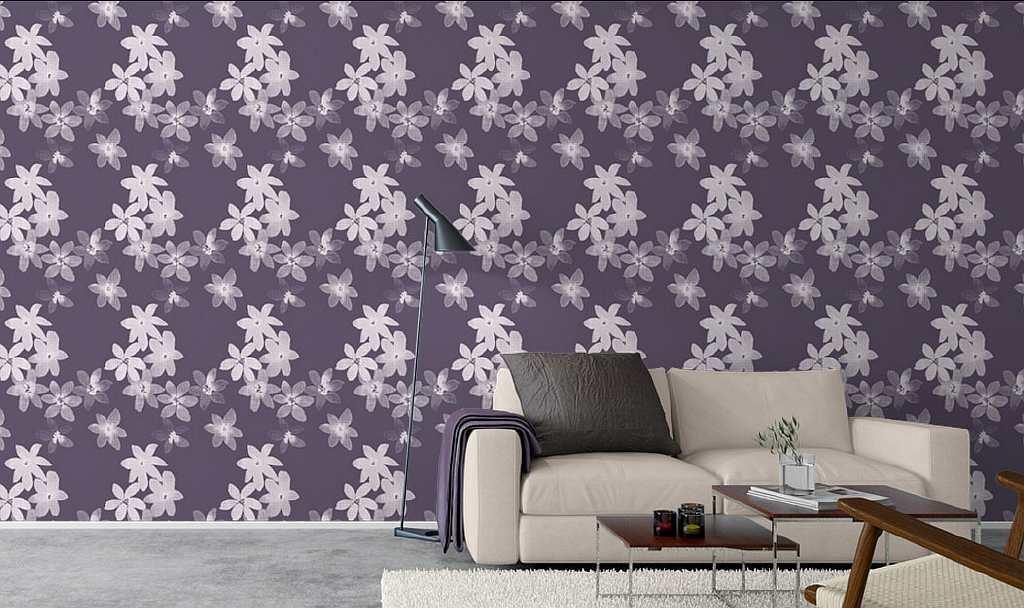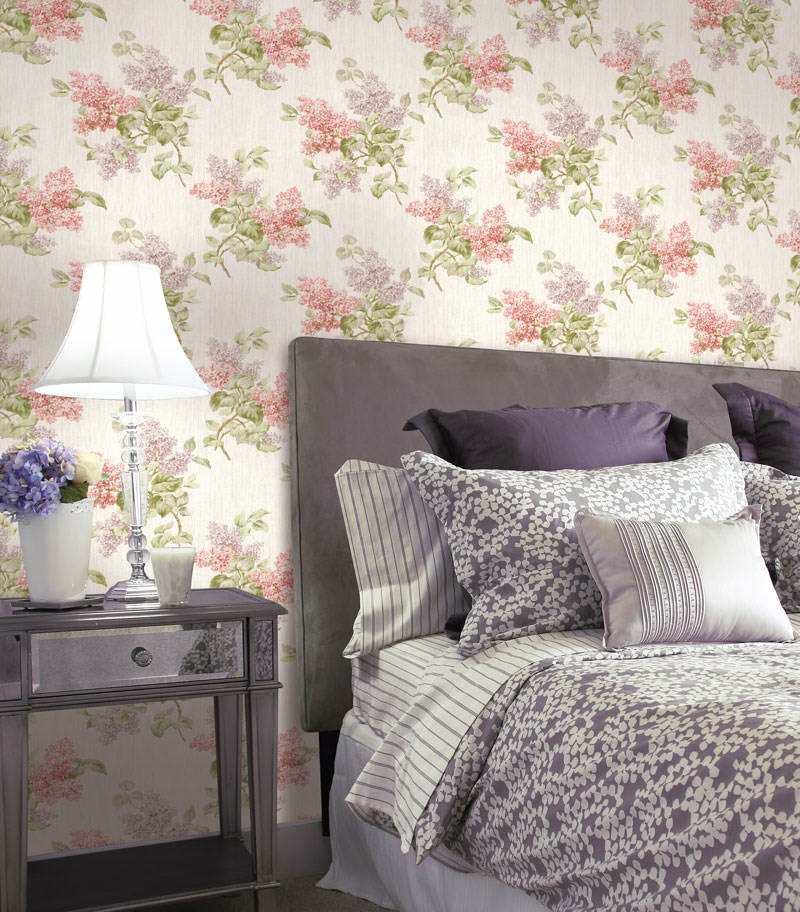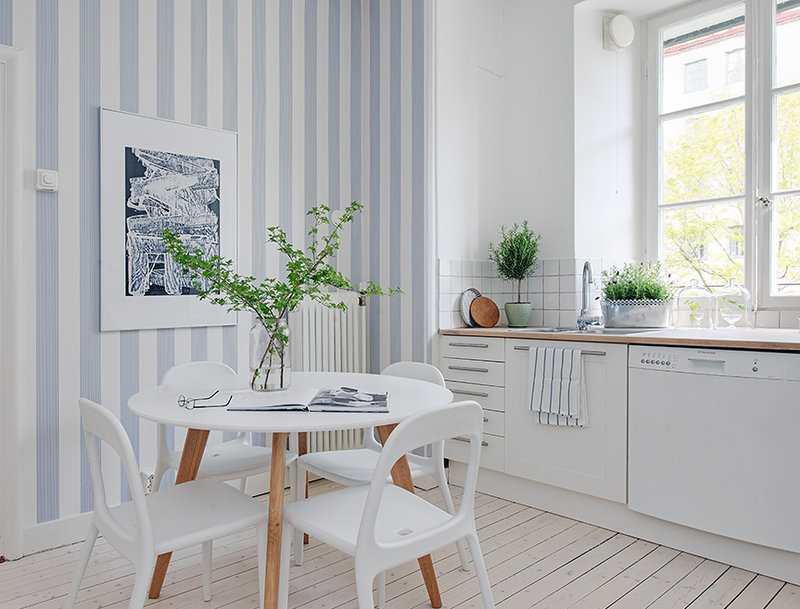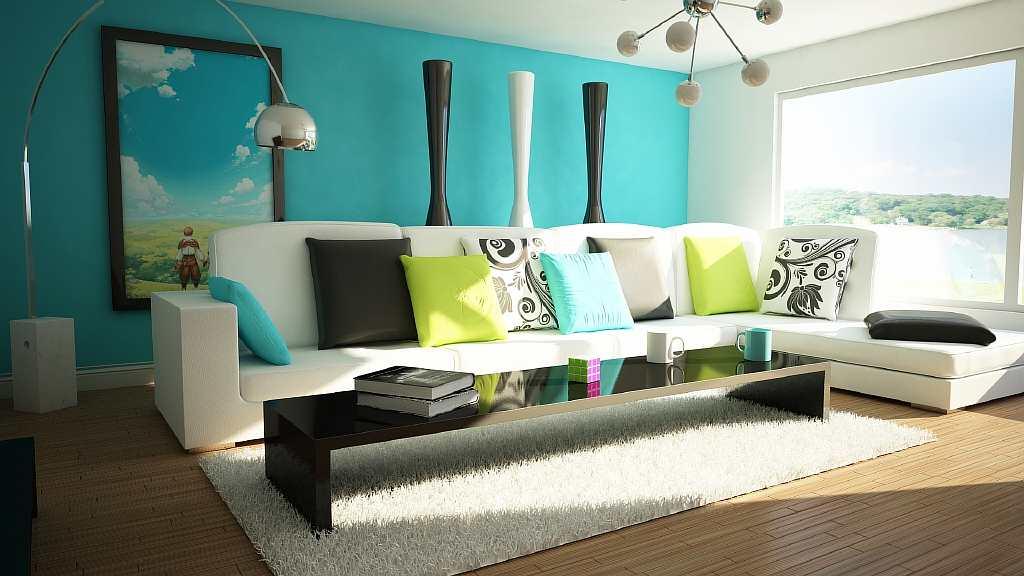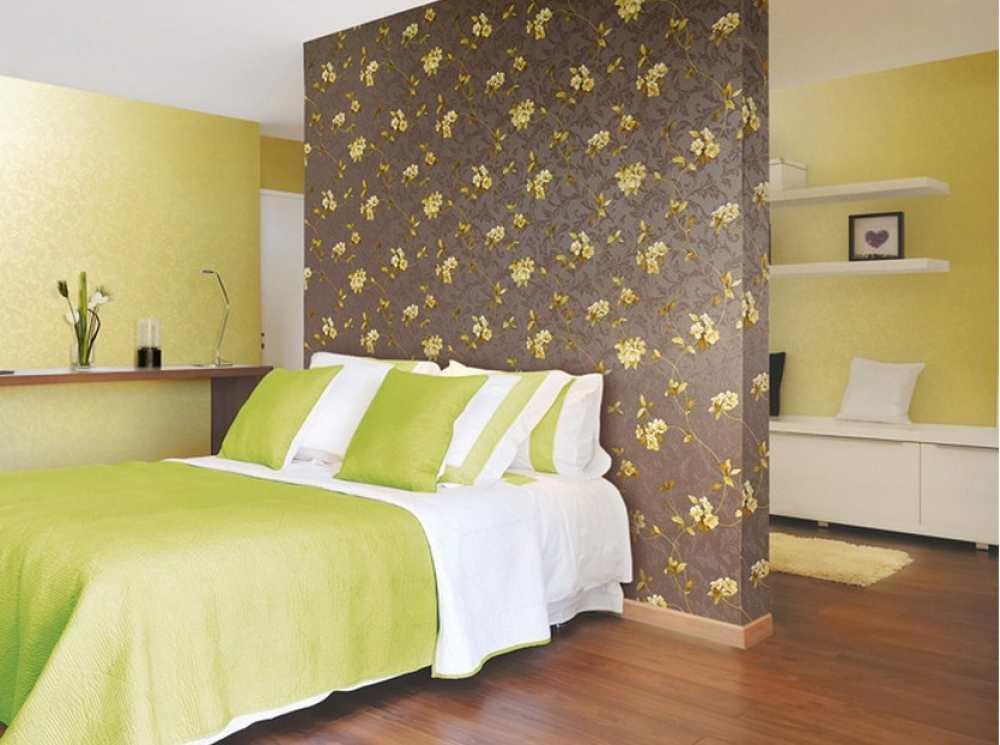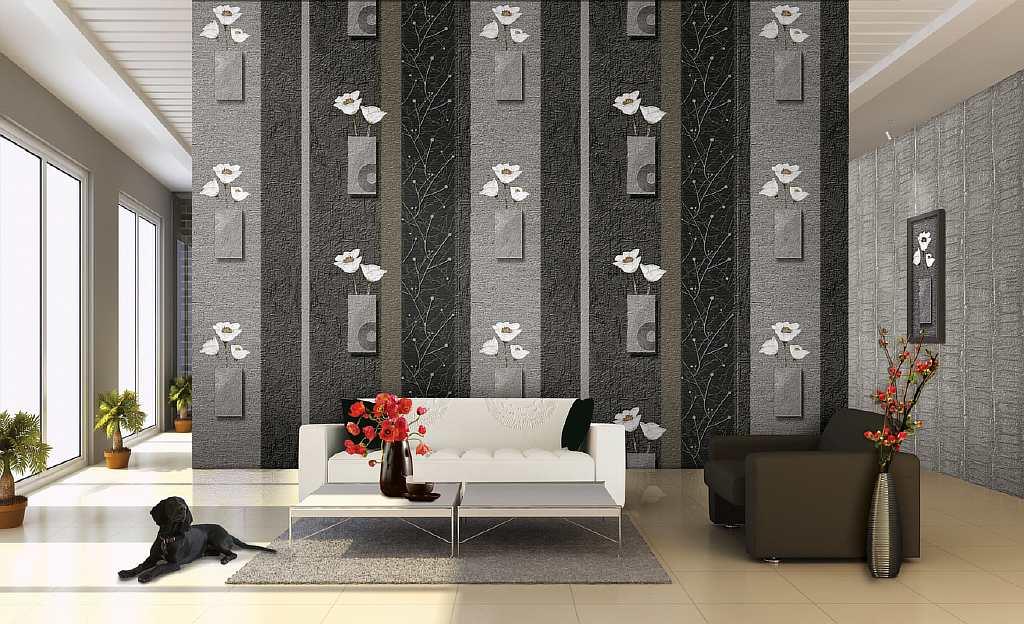Modern types of wallpaper: photos and characteristics
For a quality repair, the choice of materials is crucial. Varieties of wallpaper according to the composition of the canvas differ in performance. In order not to face such a problem as peeling corners, waves and stripes on the wallpaper, you should carefully read the instructions on the roll and select the glue recommended by the manufacturer.
In order for the wallpaper for painting to look good and serve for a long time, you need to select the coloring composition in accordance with the manufacturer's parameters. All information about specific wallpapers is indicated on the roll packaging.
The plane of the wall is rarely perfectly flat, the use of wallpaper allows you to hide defects and give the room a beautiful and well-groomed look. All wallpapers are divided into 2 categories: Basic (for painting) and decorative.
The following types of wallpaper are used for painting:
- Vinyl;
- Non-woven;
- Paper;
- From linkrust;
- Fiberglass or fiberglass.
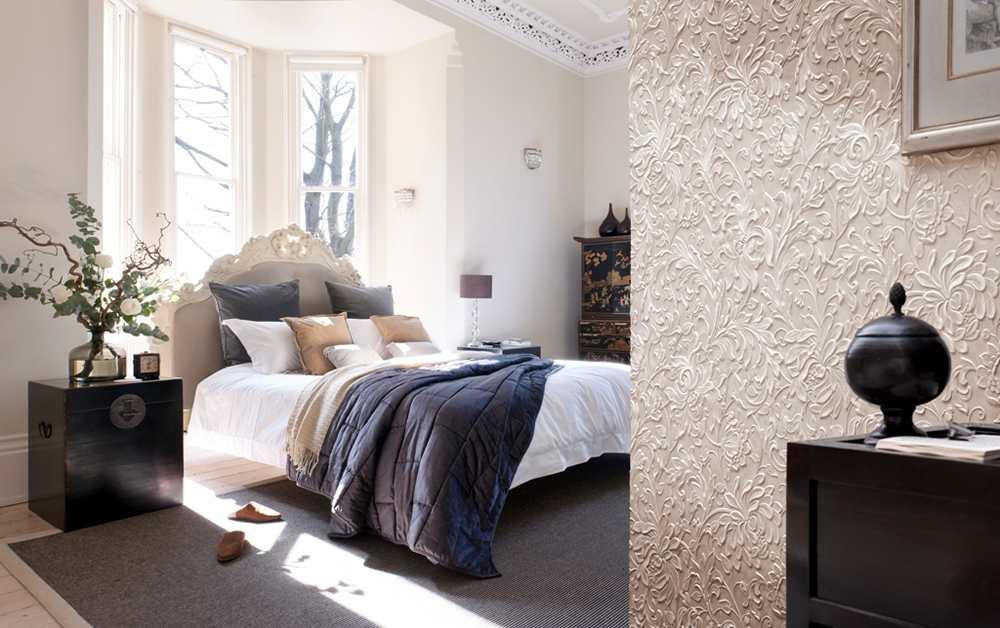
Wallpaper for painting are smooth or embossed. The relief can imitate decorative plaster, brick, tile, stone or other material. The purpose of such wallpaper is to set the texture of the wall so that the painting sets the color. Paintable wallpaper with a woven fabric texture is very popular.
Linkrust is a coating of rosin, flour, oil, chalk and wax applied to a base of paper or interwoven threads. Linkrust has a deep relief.
Vinyl and non-woven wallpaper can hide significant cracks and chips, and glass thread wallpaper increases the strength of the wall. When choosing wallpaper for painting, you need to consider further actions.
All types of wallpaper for walls are combined only with certain colors.:
- For vinyl wallpaper, water-based emulsion paint and water-based dispersion paint are suitable.
- Acrylic, latex, polyurethane and dispersion silicate paints are suitable for fiberglass, alkyd varnish and enamels are also suitable.
- For linkrust, oil-based paints, drying oil, synthetic-based acrylic enamels, and wax paste are used.
- Acrylic and alkyd paints are suitable for non-woven wallpaper.
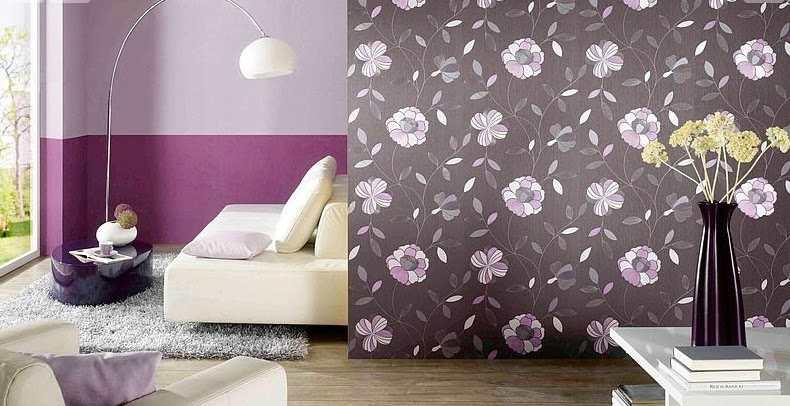
It is necessary to distinguish between wallpaper for painting and decorative wallpaper, these two varieties have completely different characteristics. Wallpaper for painting must be painted, otherwise they easily absorb dirt and odors. Paper decorative wallpaper, on the contrary, cannot be painted. Such thin and fragile coatings do not withstand impregnation with paint, begin to flake off and move away from the walls. Therefore, before purchasing any wallpaper, you need to carefully read the instructions for them. You can paint the wallpaper from 1 to 15 times, after which you need to change the canvas.
The most difficult replacement for wallpaper made of glass threads, they firmly adhere to the wall and separate along with masonry fragments.
Therefore, if you want to frequently update repairs, it is better to use less tenacious types for painting, for example, vinyl or non-woven.
Decorative wallpaper: basic selection options
Wallpaper with a color or pattern already applied is called decorative. They serve only to decorate the wall, no compositions can be applied on top of them.
What are the materials for decorative wallpaper:
- Paper, single-layer or double-layer;
- Paper and cardboard in the form of a loose mixture, liquid wallpaper;
- Textile fibers;
- Interlining;
- Vinyl;
- Cork;
- glass threads.
Acrylic types of wallpaper are ordinary paper wallpapers coated with acrylic. All paper wallpapers are relatively inexpensive, look attractive and last a long time, which is why they are so popular. They are used in any room except the kitchen and bathroom. Vinyl and interlining are more expensive and heavier materials, so they are chosen during a major overhaul.
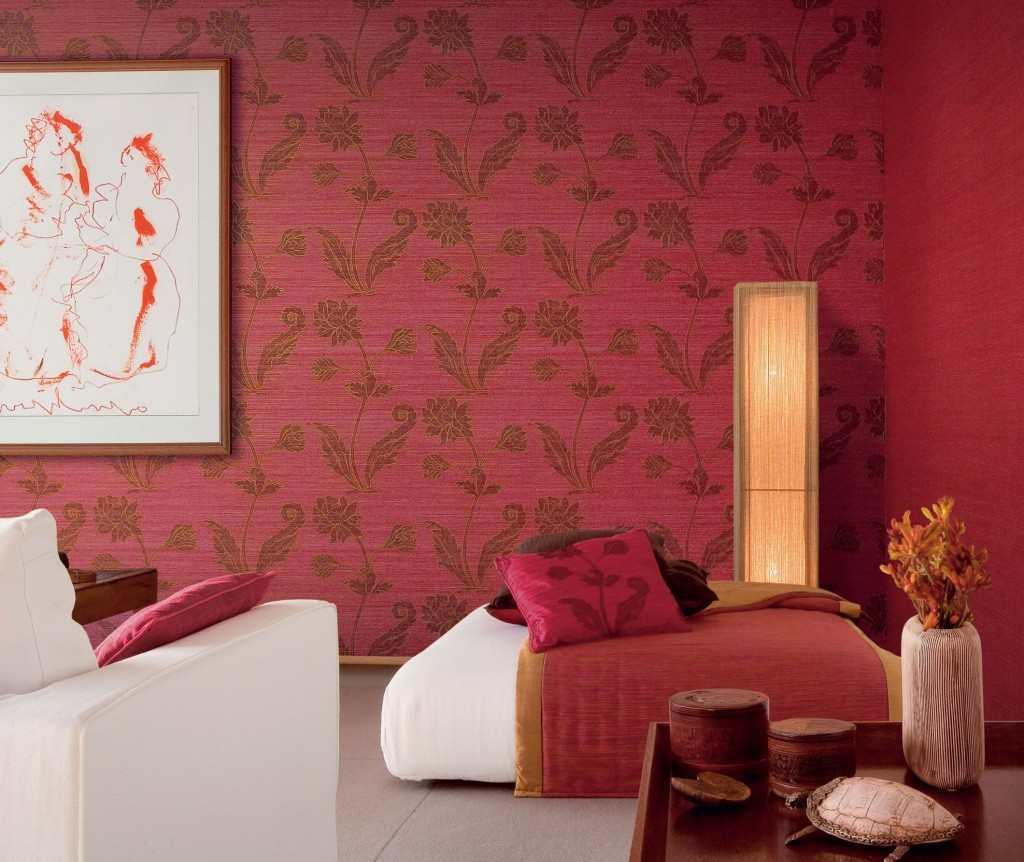
What are vinyl wallpapers:
- flat;
- Foamed;
- Dense.
All reviews of vinyl wallpaper are extremely positive. A vinyl sheet lasts for many years, does not lose color, perfectly adheres to the wall and does not create any difficulties when replacing. Thick vinyl wallpapers are considered heavy, so they need the right adhesive. They can imitate tiles, tapestry, wood texture or deep wall relief.
Properties such as extremely high resistance to moisture and strength make them in demand in the kitchen, bathroom and technical rooms with aggressive environments. Foamed vinyl has a lush canvas, perfectly covers the walls and visually levels the plane. Flat vinyl is thinner and lighter. Many manufacturers produce wallpaper made of flat vinyl with embossed threads.
Which wallpaper is better to choose according to the material for each room:
- In the kitchen and in the bathroom - thick vinyl or non-woven wallpaper, fiberglass wallpaper for painting;
- In residential areas with dry air - acrylic, two-layer paper or any decorative wallpaper.
For sunny rooms, you need to choose wallpapers that are resistant to fading. The information on the roll contains the symbol "sun" or "sun +", which means that the canvas retains its color well under the action of sunlight.
Acrylic wallpaper: beauty and durability
A variety of paper wallpapers that has earned universal recognition is acrylic types.
What are the drawing options?:
- Monochrome or multi-color;
- With floral, floral or geometric ornaments;
- Macro, landscape, 3D;
- Glossy or matte;
- Smooth or embossed.
In order for acrylic wallpapers to last for a long time, they should be used in rooms with low humidity.
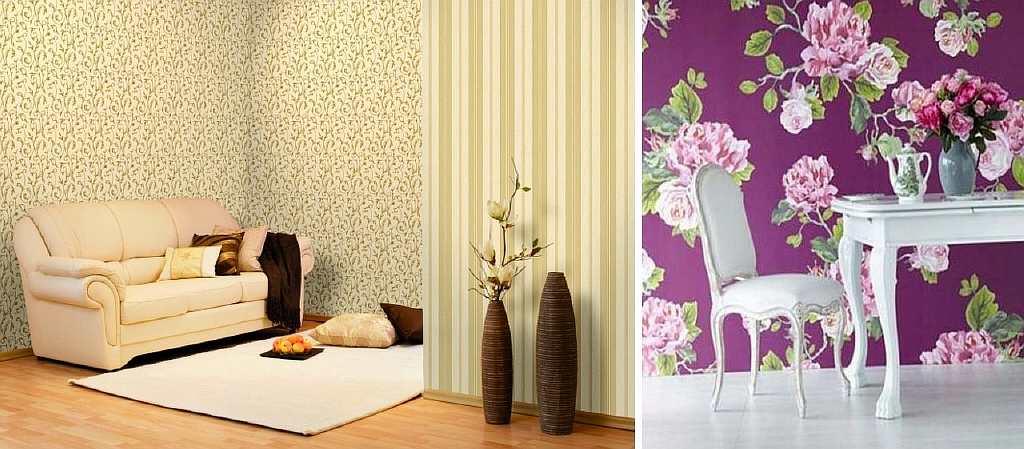
Namely:
- In the hall;
- In the bedroom;
- In the nursery;
- In the living room.
It is undesirable to use acrylic wallpaper in the kitchen, in the bathroom, in the restroom, on the balcony, at the entrance, in an unheated dacha. According to the structure, acrylic wallpapers consist of 2 layers, the base layer is paper, the top layer is acrylic dotted paint. The canvas is breathable and lays beautifully on the plane of the wall.
What are the disadvantages of acrylic wallpaper:
- Do not wash, mechanical cleaning should be done carefully;
- Do not use in rooms with condensate (unheated houses, outdoors, in loggias);
- Acrylic wallpapers have a web thickness of 1.5 - 2 mm, so they mask only minor wall defects.
Acrylic wallpapers have excellent characteristics in terms of strength, color fastness, durability. With proper care, the service life is not limited.
What is the difference between acrylic wallpaper and paper (video)
Wallpaper samples: how to choose the best option
Any description gives only part of the picture. To successfully choose a wallpaper for yourself, you need to be guided by full-fledged personal impressions.
Many manufacturers provide the opportunity to touch and see wallpaper samples so that the buyer can evaluate:
- The thickness of the canvas;
- Texture and density;
- Your tactile sensations;
- The color and luster of the surface of the wallpaper.
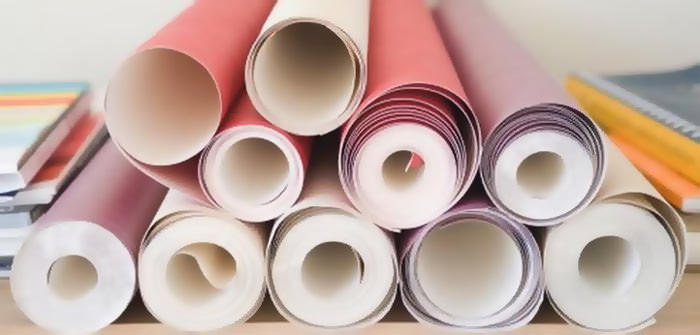
If possible, you should always study samples, and not act on the principle of "choose what is fashionable."
All types of wallpaper set a certain style of the apartment, only the person himself can choose the most comfortable option for himself.
Repair makes it possible to create a personal space, to realize your dreams and ideas, so you need to prioritize your taste, and take into account the advice of designers as secondary information.
Types of wallpaper pros and cons, the final decision
Each material has advantages and disadvantages.
For example, vinyl is expensive, but:
- Looks very presentable;
- Hides serious wall defects due to the web thickness of 4 mm;
- Lasts for decades
- Has many beautiful colors.
Some materials definitely have more disadvantages, for example, single-layer paper wallpapers. They are very cheap, but they wear out easily, tear, do not tolerate moisture well, and lose color under the influence of the sun.
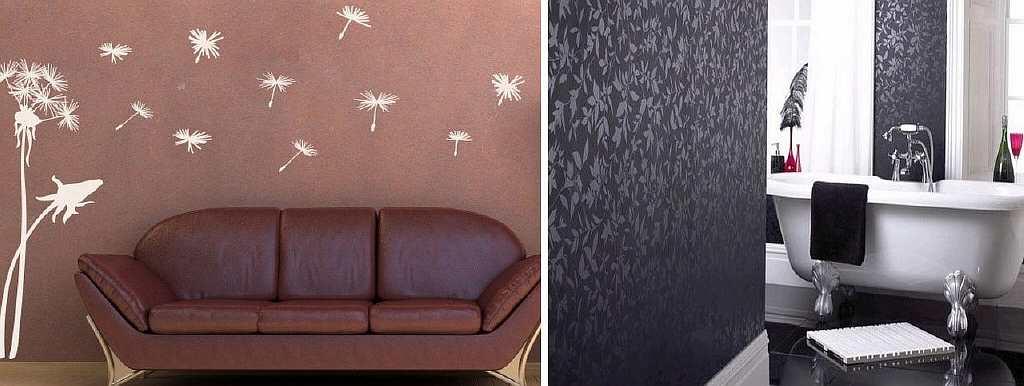
Acrylic wallpapers successfully combine the advantages of vinyl and paper:
- Their price is low;
- Their strength and durability pleases for many years;
- Their sticking is easy and simple;
- Their appearance brightens the room;
- Their texture is pleasant to the touch.
If you need to choose the design of the room, which will give a good impression with adequate cash investments, you should choose acrylic wallpapers.
What width are the wallpapers
An important parameter when gluing and calculating the consumption of finishing material is the width of the roll. Wallpapers are traditionally produced in rolls of 10.05 - 15.5 m, but some manufacturers are moving away from these parameters. The instructions always indicate the exact length and width. Widescreen wallpapers, such as landscapes, can be of any width and divided into any number of segments. You need to glue such wallpapers exactly in the sequence indicated in the instructions.
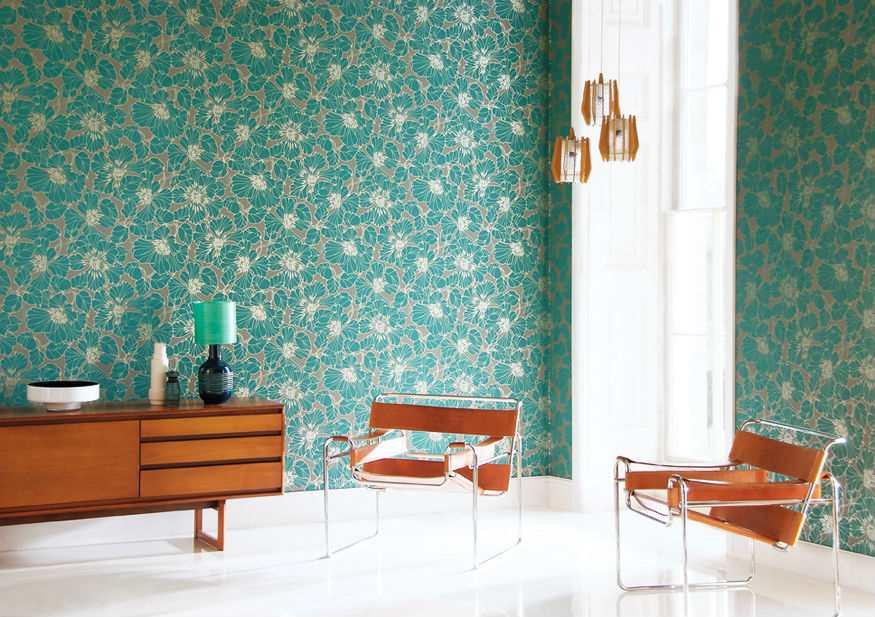
What are the widths of standard rolls:
- 0.53m;
- 0.7m;
- 1.6m.
There are collections of wallpapers with a different specified width, this must be taken into account when drawing up a gluing plan. New designer collections often increase the width of the roll, which makes their application not as convenient.
You need to glue the wallpaper together, and you should agree in advance on the distribution of roles.
In order for the canvas to converge according to the pattern, you should read the information about allowances in the instructions. Some types do not stretch when impregnated with glue, and some need to be dry-glued on a wall lubricated with composition. If any nuance in the finishing of the walls causes difficulty, you should either consult with a specialist or entrust the repair to professionals.
How to choose wallpaper (video)
In order for the wallpaper to show the declared characteristics, it is necessary to use them in rooms suitable for humidity and natural light intensity. It is important to use the information provided above in order to avoid mistakes when choosing and during work.
Examples of types of wallpaper (photo)
